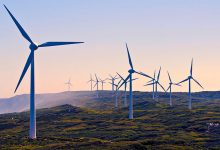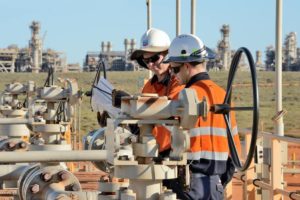Australia’s emissions reduction efforts have ground to a halt. But that shouldn’t be a surprise because over the last 20 years the country’s greenhouse gas emissions – excluding the controversial land use calculations – have barely moved.
The latest data released by the federal government on Friday show that Australia emissions rose 0.1 per cent over the year to the end of March to 465.9 million tonnes of CO2 equivalent, despite the big reductions in the electricity sector delivered by the increase in renewables.
See: Wind and solar strangle coal and gas, but diesel SUVs are killing us all
Depressingly, however, the forecast for the June quarter – the details of which we won’t see until November – suggest an even bigger jump of 0.9 per cent, or 4.1 Mt CO2-e, to 467 MT for the year to the end of June. (This includes the land use credit of 63 million tonnes of CO2-e).
The biggest reasons for this is because Australia’s obsession with gas, and LNG in particular, has been blowing out its emissions efforts.
 Polly Hemming, the director of the climate program at The Australia Institute, says the task of meeting the country’s still modest 43 per cent reduction target for 2030 (below 2005 levels) is getting harder each month.
Polly Hemming, the director of the climate program at The Australia Institute, says the task of meeting the country’s still modest 43 per cent reduction target for 2030 (below 2005 levels) is getting harder each month.
“While we cannot blame the government for all of the rise in emissions since they took office last year, that emissions are rising at all just highlights how desperate the situation now is and that the time for blaming others for inaction is long past,” she writes in a blog post.
“In June last year, in order to achieve a 43% cut in emissions by 2030 we would need to reduce annual emissions by 7.3Mt CO2 each quarter, now that has risen to need to cut 8.6Mt CO2.
“This represents are 17.8% increase in the quarterly abatement task. As each month passes the more drastic the cuts will need to be.”
The grim reality of Australia’s emissions efforts is that since 2005 – excluding the land use credit – the country has only reduced actual emissions by 1.4 per cent.
As Hemming notes, “while the government and others might suggest we have reduced emissions by 25% that is only if you include the drop in emissions from land use – in essence claiming credit for no longer logging forests at the same speed that was done 18 years ago.”
The government data goes into some detail to illustrate that the country’s biggest success story on emissions has been on the grid, where the growth of wind and solar has cut emissions in the electricity sector by 27.7 per cent from its peak in 2009, and by 22.2 per cent from 2005.
Without the growth in wind and solar Australia would have little chance of cutting emissions at all, let alone to its 43 per cent target, yet the Coalition, and most of conservative media, is calling on the government to stop the roll out of wind and solar, and wait for nuclear. Climate denial and the nuclear lobby have long been bedfellows.
In the meantime, the growth of fossil fuels away from the grid is offsetting much the 43 million tonnes of CO2-e now being saved each year from renewables on the grid. Most of this is from the gas industry.
The government data shows that emissions from stationary energy (excluding electricity) have increased 26.7 per cent, or 21.8 Mt CO2-e, driven, in particular, “by continued growth in the production and export of LNG.”
The gas industry is also a big contributor to fugitive emissions, where emissions have increased 12.8 per cent, or 5.5 Mt CO@-e since June, 2005. And Australia’s big obsessions with big SUVs and diesel utes has driven an 18.0 per cent, or 14.9 Mt CO2-e, increase in transport emissions since June 2005.
“The Government’s Intergenerational Report made the cost of inaction clear and today’s figures make it starkly obvious that not only are we not reducing our emissions at the speed needed; we are not reducing them at all,” Hemming writes.
“Failure to act with haste and urgency befitting the problem will only place a greater burden on the nation in future years.”











